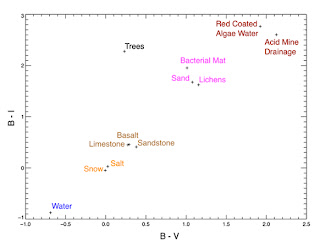Technology Review: As the Voyager 1 spacecraft was about to leave the Solar System in 1990, the American astronomer Carl Sagan asked that spacecraft's cameras be turned towards its home planet some 3 billion kilometres away.
The resulting photograph is called the Pale Blue Dot and shows Earth as a tiny bluish-white speck against the vast emptiness of space. Sagan later used this phrase for the title of a book about his vision of humanity's future in space.
Given Earth's distinctive colour, an interesting question is what colour an alien Earth orbiting another star might be. Today, we get an answer of sorts from Siddharth Hegde at the Max Planck Institute for Astronomy in Germany and Lisa Kaltenegger at the Harvard-Smithsonian Center for Astrophysics in Cambridge, Massachusetts.
The resulting photograph is called the Pale Blue Dot and shows Earth as a tiny bluish-white speck against the vast emptiness of space. Sagan later used this phrase for the title of a book about his vision of humanity's future in space.
Given Earth's distinctive colour, an interesting question is what colour an alien Earth orbiting another star might be. Today, we get an answer of sorts from Siddharth Hegde at the Max Planck Institute for Astronomy in Germany and Lisa Kaltenegger at the Harvard-Smithsonian Center for Astrophysics in Cambridge, Massachusetts.
Physics arXiv: Colors of extreme exoEarth environments


No comments:
Post a Comment